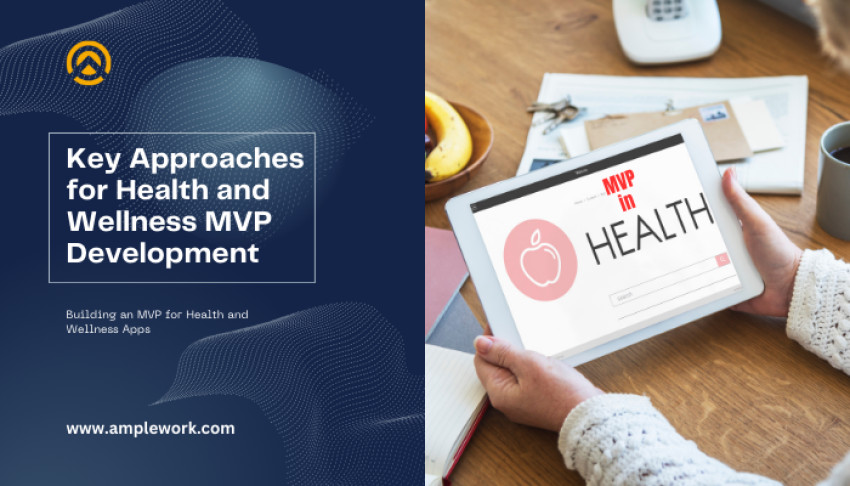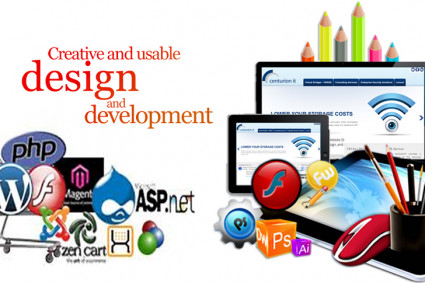
Diving into the world of healthcare tech, crafting a Minimum Viable Product (MVP) is now a must for healthcare organizations. With the IT market booming, the trend of healthcare app development is skyrocketing daily. Building MVPs offers businesses a sneak peek into how their product functions and whether it hits the mark with its audience. These MVPs are not just about understanding the clients' needs but also about luring in investors. Especially in health, MVPs help businesses identify client requirements and make necessary enhancements in features and functionalities to meet the latest audience demands. Research underscores that over 35% of businesses fail due to a lack of understanding of market needs. That's precisely why MVP app development is a game-changer for businesses in San Jose (USA).
In this article, let's unravel key strategies for crafting the perfect MVP in the dynamic realm of healthcare and wellness.
Key Approches for MVP Development in the Health & Wellness Sector
1. Determining the Targeted Audiences for Your Product: Identifying the intended users for your healthcare mobile app development is the first important step you should do. This gives the developers a clear understanding of the principles, priorities, and difficulties they will encounter while creating a mobile application that will appeal to your intended user base. Additionally, determining your target market early on can assist you in researching the most recent trends and criteria that that demographic will need in order to develop a mobile app for health and wellness.
2. Clearly Highlighting Key Elements: The following is an important factor to take into account while developing an MVP for a healthcare application development. It would help if you concentrated on the essential aspects that your minimal viable product must have. The MVP has the bare minimum of functionality you will need to add to the final mobile application. Additionally, you should outline the essential elements that will help you keep your MVP brief and user-friendly by preventing an overabundance of features and functions.
3. UI/UX Design: After you have clearly defined the core features and functionalities that you need to add to your MVP. The next key strategy that you must focus on is the UI/UX design of the MVP. You should create a user interface that must be intuitive and deliver the users with a user-friendly experience. Allowing them to easily navigate through your MVP app, exploring all the necessary features and functionalities. Also, after the design is created, you should gather feedback from the potential users so that you can make the necessary changes and transformations to its user interface, making the app more efficient and interactive.
4. Integration: You should practice integration when offering MVP development services for startups. Integrating your healthcare mobile app MVP with smart wearable devices is a must. Just because it allows the users of your minimum viable product to effectively track and monitor their health. This will also enhance the user’s engagement with your mobile app and make your data collection process much easier. Also, for processing the successful integration with wearable devices, you need to ensure compatibility with a variety of devices to enhance the user base of that mobile app.
5. Data Security & Privacy: We all know that the health data of a wide range of individuals is sensitive and personal. This is the major reason why it needs complete security from different forms of cyber threats. While going for MVP Healthcare mobile app development you must implement robust security measures to your solutions making it trustworthy for the users. Also, you should make sure that your MVP must comply with all the security regulations such as HIPAA and many others for building your client’s trust.
6. Scalable MVPs: We all know that in the future your mobile app will get a wide range of users. Keeping the same in mind you should design your MVP architecture in such a way that it can handle a wide range of users without making them suffer any sort of inconvenience. You should plan accordingly for the increase in traffic, data storage, and other aspects that are affected by the gains in the number of users. This will let the users attract to your MVPs more if it doesn’t get slowed down even when accessed by many users.
7. Iterative Development & Feedback Loops: You should embrace the iterative development approach and take feedback from different sources on a regular basis to make changes to your mobile app. You must carefully consider the user’s suggestions and keep on adding the latest key features and functionalities to optimize your MVP performance. Also, the feedback loops must be continually generated from your targeted audiences just to enhance, optimize, and improvise your healthcare MVPs to attract a wide range of users to them
Conclusion
In this insightful article, we've delved into the crucial realm of MVP in app development, unraveling key strategies essential for creating the perfect MVP tailored for healthcare solutions in San Jose (USA). For wellness app development, it's imperative for companies, like Amplework, the leading MVP app development company in San Jose, to embrace these strategies. These steps ensure the creation of MVPs that not only meet business needs but also provide optimal value to users, aligning with their specific requirements. We excels in navigating the intricacies of MVP development, strategically led by healthcare app developers who adeptly craft feature-rich and top-notch MVPs. This approach perfectly aligns healthcare apps with the dynamic demands of both businesses and users, solidifying Amplework's position as the go-to MVP app development company in the USA.





